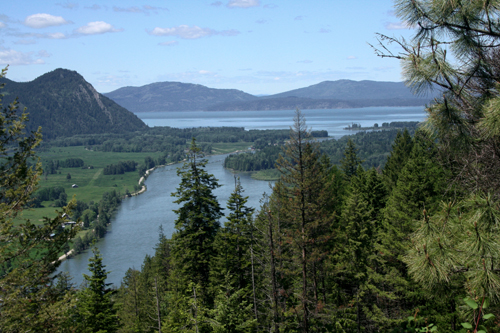When coming in from Montana, Clark Fork Idaho is the port of entry to the gorgeous Pend Oreille Scenic Byway along Highway 200.
Clark Fork is a small town with the population of 578 but has always been a draw for people seeking the peace and quite that mountain lifestyle has to offer. A large portion of the land is owned by the state and provide the perfect play ground for outdoor recreation.

This photo was taken near Antelope lake overlooking Derr Island.
The most prominent feature Clark Fork, Idaho is the clark Fork river which feeds Lake Pend Oreille the largest lake in Idaho.
Much of the area was formed by glaciers and cataclysmic floods. Just about where the Cabinet Gorge dam now stands was a mile high ice dam which formed the Great Lake Missoula. (which was the size of Lake Erie and Lake Ontario combined.) The ice dam failed repeatedly with each glacial advancement, causing cataclysmic floods that swept through Idaho and Washington and Oregon. These towering walls of water and glacial ice moved at such tremendous speeds that researchers believe the lake may have empties in as little as 2 to 3 days.
Our first inhabitants were the Flathead Indians. Meriweather Lewis and William Clark explored the area during the 1806 Lewis and Clark Expedition. In 1864 Northern Pacific Railroad started construction on a railroad line between Lake Superior and Puget Sound. In 1881 construction on the transcontinental line through the Bitterroot and Cabinet Mountains had begun and with the railroad the towns of Clark Fork and Hope were formed.
In 1916 a bridge was constructed over the Clark Fork River and ridding the area of the need to operate a ferry. Located at the northeast end of Lake Pend Oreille on the Clark Fork River, this small but active community hosts a full range of outdoor activities, restaurants, and lodging. The Cabinet Gorge dam is just upstream and supplies power to the area. Also upstream is the Cabinet Gorge fish hatchery, designed to handle 20 million Kokanee salmon annually. Clark Fork offers great fishing, wildlife and bird watching, Mountain Biking, Miles of National Forest Service Trails.
